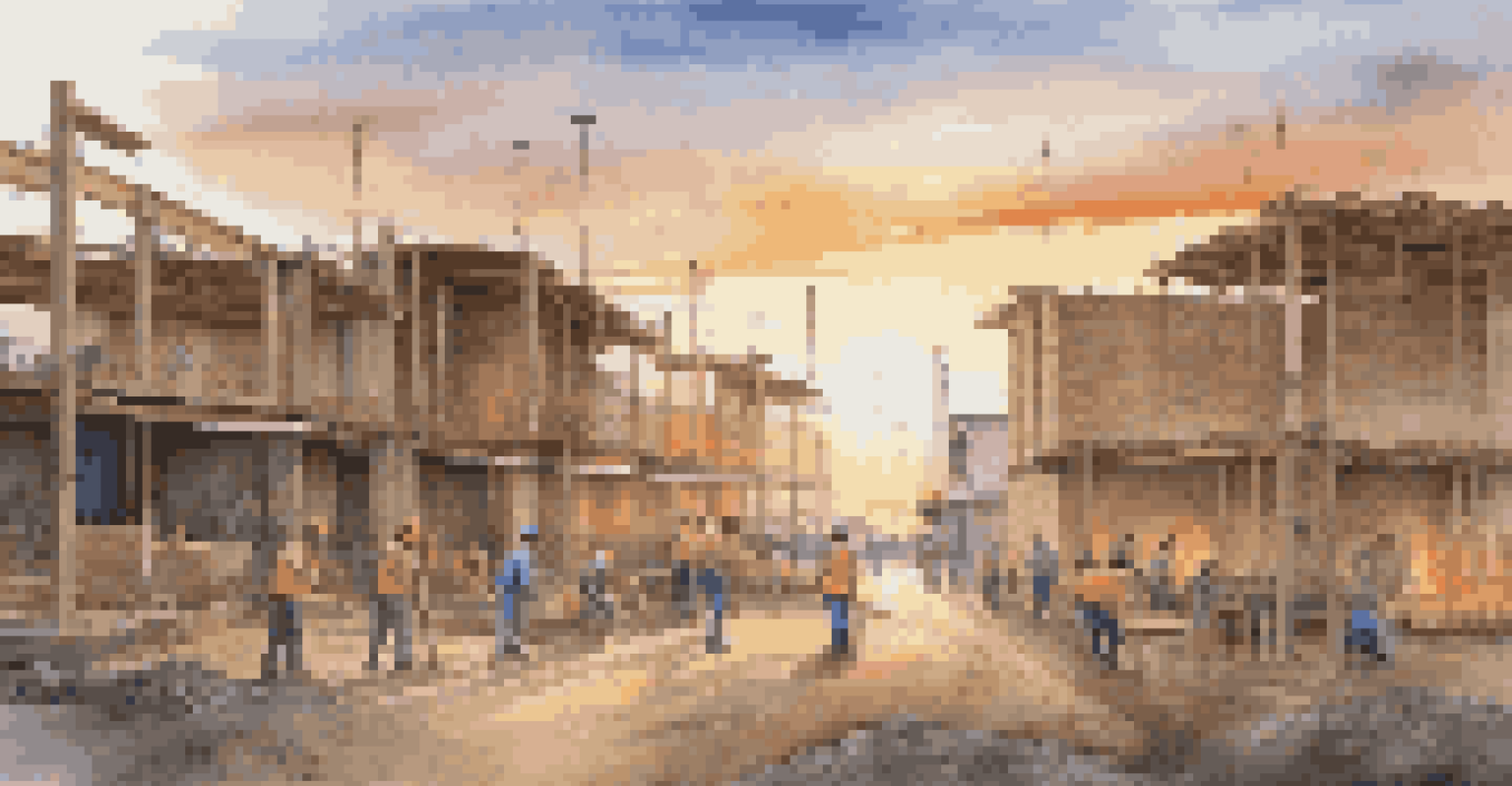Sustainable Building Certifications: What’s Trending Now

Understanding Sustainable Building Certifications
Sustainable building certifications are standards that help ensure structures are environmentally friendly and resource-efficient. They cover everything from energy use and water conservation to materials selection and indoor air quality. These certifications not only promote sustainability but also enhance the value of properties in a competitive market.
Sustainability is no longer a choice, it's a necessity.
Famous certifications like LEED (Leadership in Energy and Environmental Design) and BREEAM (Building Research Establishment Environmental Assessment Method) provide frameworks for assessing a building's sustainability. By adhering to these standards, developers and builders can demonstrate their commitment to reducing environmental impact. This not only benefits the planet but also attracts eco-conscious tenants and buyers.
As the world leans more toward sustainable practices, understanding these certifications becomes crucial for anyone in the construction or real estate industries. They serve as benchmarks for what it means to build responsibly, paving the way for greener, healthier living and working environments.
The Rise of Zero Energy Certifications
One of the most exciting trends in sustainable building certifications is the rise of zero energy certifications. These certifications ensure that a building produces as much energy as it consumes over a year, thanks to renewable energy sources like solar panels. This concept is gaining traction as more builders and homeowners seek to minimize their carbon footprints.

Zero energy buildings are not only better for the environment but can also save owners significant amounts on energy bills. Imagine a home where your energy meter barely moves; that’s the allure of going zero energy! This trend is particularly appealing in areas with high energy costs, making it a smart financial choice in the long run.
Sustainable Certifications Enhance Value
Sustainable building certifications not only promote eco-friendly practices but also increase property value in a competitive market.
As technology advances and renewable energy becomes more accessible, we can expect zero energy certifications to become more commonplace. This shift represents a broader commitment to sustainability and illustrates how innovation can lead to practical solutions for energy consumption.
Emphasis on Indoor Environmental Quality
Indoor environmental quality (IEQ) is becoming a focal point in sustainable building certifications. This aspect considers the air quality, lighting, thermal comfort, and acoustics within a building. As people spend more time indoors, especially post-pandemic, the importance of a healthy indoor environment cannot be overstated.
The greatest threat to our planet is the belief that someone else will save it.
Certifications that prioritize IEQ help ensure that buildings promote not just environmental sustainability but also human health. For example, materials used in construction are assessed for toxicity, and ventilation systems are designed to improve air circulation. This holistic approach attracts tenants who value health and well-being in their living or working spaces.
As awareness of health issues related to indoor environments grows, we can expect to see a stronger emphasis on IEQ in future certifications. It's a reminder that sustainability isn't just about the planet; it’s also about creating spaces that enhance our quality of life.
The Importance of Climate Resilience in Certifications
Climate resilience is increasingly becoming a key component of sustainable building certifications. As extreme weather events become more frequent, buildings need to be designed to withstand these challenges. Certifications that include climate resilience criteria help ensure that structures can adapt to changing environmental conditions.
For instance, buildings in flood-prone areas might be required to incorporate elevated foundations, while those in hot climates may need reflective roofing materials. By focusing on climate resilience, builders and developers can safeguard their investments and ensure that properties remain functional and safe in the face of climate change.
Zero Energy Buildings Are the Future
Zero energy certifications ensure buildings produce as much energy as they consume, appealing to eco-conscious homeowners and offering long-term savings.
This trend signifies a proactive approach to sustainability, emphasizing the need for buildings to not only be efficient but also to be resilient. It’s about future-proofing our environments, ensuring they can thrive despite the unpredictable nature of our climate.
Integration of Smart Technology in Sustainable Buildings
Smart technology is revolutionizing the way we think about sustainable building certifications. From energy management systems to smart thermostats, these technologies help optimize resource use, making buildings more efficient. This integration is not just a trend; it’s a game-changer for how we manage energy and resources in real-time.
For example, smart sensors can adjust lighting based on occupancy, significantly reducing energy waste. Moreover, these technologies can provide valuable data to building managers, helping them identify areas for improvement. The combination of sustainability and technology creates a more responsive and efficient environment.
As smart technology continues to evolve, its role in sustainable building certifications will likely expand. This partnership promises to enhance both the efficiency and user experience of buildings, making them not only more sustainable but also more enjoyable to inhabit.
The Global Shift Towards Circular Economy Principles
Circular economy principles are making their way into sustainable building certifications, emphasizing the need for resource efficiency and waste reduction. Instead of the traditional linear model of 'take, make, dispose,' the circular approach encourages reusing materials and minimizing waste throughout a building's lifecycle. This shift is crucial for reducing the overall environmental impact of construction.
For instance, buildings designed with disassembly in mind allow for easy reuse of materials at the end of their life. This not only conserves resources but also reduces landfill waste. By integrating circular economy principles, builders can create more sustainable, long-lasting structures that align with eco-friendly values.
Community Focus Drives Local Practices
Local and community-focused certifications prioritize sustainable building methods that support local economies and enhance community identity.
As more industries recognize the benefits of a circular economy, we can expect sustainable building certifications to adopt these principles more widely. This trend reflects a broader commitment to sustainability across sectors, driving innovation and responsible practices in construction.
Local and Community-Focused Certifications on the Rise
A growing trend in sustainable building certifications is the focus on local and community-oriented practices. These certifications prioritize building methods and materials that support local economies and minimize transportation emissions. By sourcing materials locally, builders not only reduce their carbon footprint but also contribute to the community's economic well-being.
For example, some certifications encourage the use of regional materials, which can enhance the cultural and historical context of a building. This approach fosters a sense of community and connection to place, making buildings more meaningful to the people who use them. It’s about building a sense of identity and pride within the community.

As sustainability becomes more about social responsibility, we can expect local and community-focused certifications to gain traction. This trend highlights the interconnectedness of environmental sustainability and community well-being, creating a more holistic approach to building.